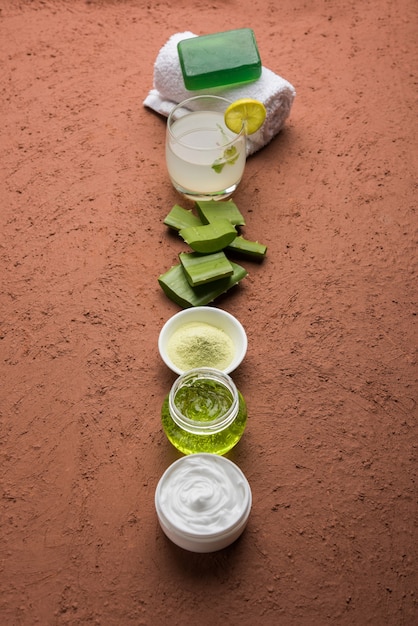The 2025 Guide to Sustainable Skincare: Eco-Friendly Products & Practices

Advertisements
The 2025 Guide to Sustainable Skincare explores eco-friendly practices and products, focusing on reducing environmental impact through mindful choices, innovative ingredients, and ethical sourcing for a healthier planet and radiant skin.
Advertisements
Are you ready to revolutionize your skincare routine with sustainability in mind? The 2025 Guide to Sustainable Skincare: Eco-Friendly Products and Practices provides you with all the necessary information.
Understanding Sustainable Skincare
Advertisements
Sustainable skincare is more than a trend; it’s a commitment to the environment and your health. It involves choosing products and practices that minimize environmental impact while maximizing benefits for your skin.
What Makes Skincare Sustainable?
Sustainable skincare focuses on ingredients, packaging, and ethical sourcing. It considers the entire lifecycle of a product, from creation to disposal, ensuring minimal harm to the planet.
Here’s a breakdown:
- Eco-Friendly Ingredients: Prioritizing plant-based, renewable resources.
- Sustainable Packaging: Using recyclable, biodegradable, or refillable materials.
- Ethical Sourcing: Ensuring fair labor practices and biodiversity protection.
By understanding these core elements, you can make informed choices and contribute to a more sustainable future for the beauty industry.
Sustainable skincare is about harmonizing beauty with environmental responsibility. It encourages consumers and brands to rethink traditional practices and embrace a more conscious approach.
The Importance of Eco-Friendly Ingredients
The heart of sustainable skincare lies in its ingredients. Eco-friendly ingredients are not only better for the environment but also often gentler and more effective for your skin.

Key Sustainable Ingredients to Look For
Choosing the right ingredients can significantly reduce your ecological footprint. Look for these ingredients in your skincare products:
- Aloe Vera: Soothes and hydrates skin while being easily renewable.
- Shea Butter: Moisturizes and protects skin, sourced from sustainably managed shea trees.
- Jojoba Oil: Balances skin’s oil production without harming ecosystems.
These ingredients offer fantastic skincare benefits while minimizing environmental harm. By opting for products containing them, you support sustainable agriculture and biodiversity.
Eco-friendly ingredients provide a win-win solution: healthier skin and a healthier planet. Embracing these elements in your skincare routine is a step towards a more sustainable lifestyle.
Sustainable Packaging Options
Packaging plays a crucial role in the sustainability of skincare products. Traditional packaging often ends up in landfills, contributing to pollution. Sustainable packaging options, however, offer eco-friendly alternatives.
Innovative Packaging Solutions
Brands are increasingly adopting sustainable packaging to reduce their environmental impact. Here are some popular options:
- Recyclable Materials: Glass, aluminum, and certain plastics can be recycled and reused.
- Biodegradable Packaging: Plant-based materials that decompose naturally over time.
- Refillable Containers: Allowing customers to purchase refills instead of new packaging.
These solutions not only reduce waste but also encourage a circular economy. By supporting brands that use sustainable packaging, you contribute to a healthier planet.
Sustainable packaging is a vital component of eco-friendly skincare. It transforms waste management and promotes a more responsible approach to consumption.
Ethical Sourcing and Fair Trade Practices
Beyond ingredients and packaging, ethical sourcing is a critical aspect of sustainable skincare. It ensures that products are made with respect for both the environment and the people involved in their production.

The Importance of Fair Trade
Fair trade practices guarantee that farmers and workers receive fair compensation and safe working conditions. This is especially important for ingredients sourced from developing countries.
Consider these points:
- Fair Wages: Ensuring workers receive a living wage for their labor.
- Safe Working Conditions: Providing a healthy and secure environment for employees.
- Community Development: Investing in local communities and promoting education and healthcare.
By choosing products with fair trade certifications, you support ethical labor practices and contribute to a more equitable global economy.
Ethical sourcing and fair trade practices address social and environmental injustices in the beauty industry. They ensure that sustainability encompasses both ecological and human welfare.
DIY Sustainable Skincare Recipes
Creating your own skincare products is a fantastic way to ensure sustainability and customize your routine. DIY recipes often use simple, natural ingredients that are gentle on your skin and the environment.
Easy Recipes for a Sustainable Routine
Here are a few DIY recipes to get you started:
- Oatmeal Face Mask: Mix oatmeal with honey and water for a soothing, exfoliating mask.
- Coconut Oil Moisturizer: Use pure coconut oil as a natural, hydrating moisturizer.
- Green Tea Toner: Brew green tea, let it cool, and use it as a refreshing toner.
Making your own skincare products can be both fun and effective. It allows you to control the ingredients and reduce waste from packaging.
DIY skincare recipes empower you to take control of your beauty routine. They promote a mindful approach to consumption and a deeper connection to the ingredients you use.
Brands Leading the Way in Sustainable Skincare
Many brands are now prioritizing sustainability and setting new standards for the beauty industry. By supporting these companies, you encourage further innovation and adoption of eco-friendly practices.
Spotlight on Sustainable Brands
Here are some brands that are making a significant impact:
- [Brand Name 1]: Known for using organic, sustainably sourced ingredients and eco-friendly packaging.
- [Brand Name 2]: Committed to reducing waste through refillable containers and biodegradable materials.
- [Brand Name 3]: Supports fair trade practices and community development in ingredient sourcing.
These brands demonstrate that sustainability and high-quality skincare can go hand in hand. By choosing their products, you support a more ethical and environmentally responsible beauty industry.
Sustainable brands are driving change in the beauty industry. They inspire consumers and other companies to embrace eco-friendly practices and make more conscious choices.
| Key Point | Brief Description |
|---|---|
| 🌿 Eco-Friendly Ingredients | Plant-based, renewable resources for healthier skin and planet. |
| ♻️ Sustainable Packaging | Recyclable, biodegradable, or refillable materials to reduce waste. |
| 🤝 Ethical Sourcing | Fair wages and safe conditions for workers throughout supply chain. |
| 🌱 DIY Skincare | Create your own sustainable skincare with simple, natural ingredients. |
Frequently Asked Questions
▼
Sustainable skincare refers to products and practices that minimize environmental harm, use ethical sourcing, and promote the long-term health of both your skin and the planet.
▼
Switching to sustainable skincare reduces your environmental footprint, supports ethical labor practices, and often provides better results for your skin due to the use of natural, gentle ingredients.
▼
Look for certifications like Fair Trade, Leaping Bunny, and organic labels. Check ingredient lists for natural and renewable resources and packaging for recyclable or biodegradable materials.
▼
Some sustainable skincare products might have a higher upfront cost, but many are competitively priced. Additionally, DIY options can be a cost-effective way to create sustainable skincare solutions.
▼
Sustainable skincare products are available at specialty beauty stores, online retailers, and directly from brands committed to sustainability. Research and choose brands with transparent and ethical practices.
Conclusion
Embracing sustainable skincare in 2025 is not just a trend—it’s a responsibility. By making informed choices about ingredients, packaging, and ethical sourcing, you can contribute to a healthier planet and achieve radiant, healthy skin. Let’s make a commitment to a more sustainable and beautiful future.





